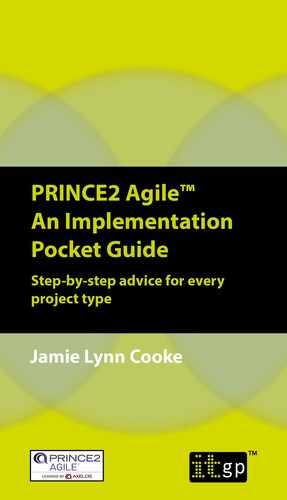There was a time when business planning was an annual activity, with key decision-makers getting together before the start of each fiscal year, identifying the corporate objectives for the upcoming year, establishing the corresponding annual budgets, and documenting these details in an annual report.
This approach worked (reasonably) well in a world where market conditions were relatively stable, technology innovations were slow and infrequent, competition was a known quantity, and staff were in it for the long haul. That is not today’s corporate world.
In today’s ever-changing, fast-moving, global-reaching marketplace, the key to maintaining your competitive advantage, keeping your products and services relevant, and retaining your customers is responsiveness – being in a position to adapt the work that the organization is doing at any time to align with the most current market, competitive, and corporate information available.
The paradox is that, even though the business climate has changed, the basic principles of fiscal responsibility, due diligence, and corporate governance need to remain in order for senior management to ensure that operating costs are being expended on those activities that will generate the most significant business value for the organization. It is the same requirement that existed in the world where executives could make key decisions on an annual basis, get monthly status reports, and revisit them the following year to see the outcomes; but we no longer live in that world.
The executive management of an organization in today’s marketplace still needs to maintain responsibility for corporate governance even when the landscape is changing on a monthly, weekly, or even daily basis. They face a constant struggle to balance the need to support a viable business case and ensure fiscal responsibility in managing overhead costs with the need to be responsive to ongoing changes in technology, market conditions, and resources.
This is why PRINCE2 Agile™ is ideal for today’s corporate world. It combines the governance, due diligence, and accountability that senior management requires with the responsiveness and flexibility that project delivery teams need to do their jobs most effectively:
PRINCE2 Agile enables businesses to become more competitive by focusing on delivery as well as project direction and management.2
Interestingly, PRINCE2 Agile does more than provide the framework that allows executives, project delivery teams, and business stakeholders to work towards a shared goal; it also provides a previously unheard-of level of communication, information sharing, and, most importantly, trust.
Executives can know the project status any time that they require without asking for specially created reports. This means that they can confidently leave the project delivery team to get the job done, knowing that, if there are significant changes, the PRINCE2 Agile exception-reporting structure will advise them.
It also means that delivery team members are empowered to do the work that is required with the full support of management – and without having to put their work on hold (and shift their focus) to write lengthy status reports or wait for management approvals.
If your organization has already invested time and resources in establishing a PRINCE2® framework, the transition to PRINCE2 Agile is, in many respects, an extension of the procedures and practices that staff currently use – although it may require a shift in their mindset. (See Chapter 4: Five Keys to PRINCE2 Agile Success.)
If you do not have an existing governance framework, this is an opportunity to invest in a model that leverages the proven best practices of PRINCE2 and the responsive, business-value driven productivity of Agile methods.
PRINCE2 Agile™: An Implementation Pocket Guide is structured to enable you to successfully implement PRINCE2 Agile in a range of corporate scenarios, including:
- PRINCE2 organizations that want to implement PRINCE2 Agile to get the benefits of Agile methods.
- PRINCE2 organizations that want to merge their existing Agile project work into the combined PRINCE2 Agile framework.
- PRINCE2 organizations that want to transition the next stage of their existing waterfall projects into the combined PRINCE2 Agile framework.
- Organizations with no existing governance structure or project delivery method that want to implement PRINCE2 Agile as an integrated governance and project delivery framework.
- Organizations that currently use Agile methods with no governance framework that want to implement PRINCE2 Agile to provide greater alignment between their Agile work and corporate objectives.
This book is intended for anyone who is impacted by a PRINCE2 Agile project, either directly as a project team member or indirectly as an affected business area, such as customer service, quality assurance, and project administration.
Most importantly, the guidance in this book adheres to one of the core principles of PRINCE2 Agile by providing flexible options in each scenario to allow you to implement the processes, tools and structures that are best suited to the specific needs of your project – and your organization.
______________________________________
2 Taking Agile to PRINCE2, Raconteur (2015), http://raconteur.net/business/taking-agile-to-prince2.
